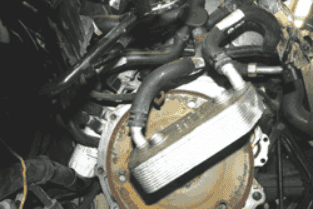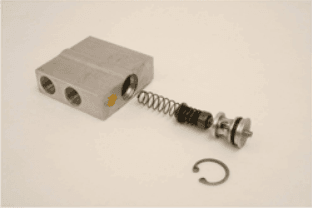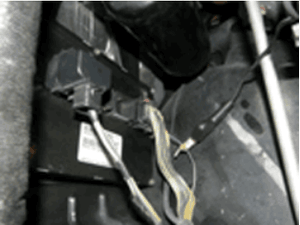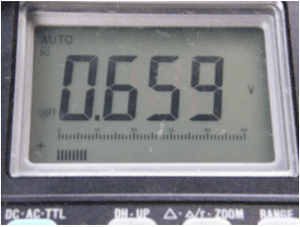Can You Feel The Heat?
Things are heating up in the transmission as technology continues to roll along…
| It does help when there is a code or a message display that clues you in. Some Range Rovers have an over-temp strategy that initiates when it sees ATF temperature exceed a preprogrammed threshold. Once initiated, the driver will notice late shifting and perhaps a sudden neutralizing during highway driving along with a Transmission Overheat message appearing in the instrument cluster. The overheat problem in this case is typically caused by a failed radiator where the lower eight tubes supplying coolant to the transmission cooler gets restricted preventing heat dissipation. The over-heat temp strategy designed to cool the transmission is done by significantly increasing the speed of the shifting points in order to keep engine rpm and cooling to an optimum. |
BMW 3 and 5 series have a thermal bypass valve above the heat exchanger (Figures 1-3). When this fails causing ATF temperature to increase, a strategy kicks in that extends the shift patterns as well as prohibiting a shift into high gear (5th). This may or may not set a code.
| ate model Hyundai’s such as a Sonata with low mileage starts having harsh engagements into gear described by the driver as a clunk followed by a sudden surge in forward or reverse. Intermittent harsh shifts, some worse than others may accompany the complaint and may or may not set any TFT codes yet the sensor is bad. |
There are two temperature sensors used on AS68RC transmissions in Dodge incomplete chassis vehicles behind 6.7L diesels. Depending on which sensor fails the transmission may experience an early full apply of the converter clutch. This complaint may also be accompanied with no PTO operation. Or, the complaint is a loss of 5th, 6th and TCC apply.
| TFT Sensor A is located in the valve body sump area, while TFT Sensor B is located in the To Cooler fitting on the transmission. TFT Sensor B monitors converter out temperature which is typically hotter than the sump which TFT sensor A monitors. If an overheat signal is sent to the TCM, the computer strategy is to fully apply the converter clutch at slightly above the 1,200 rpm range. PTO is also disabled. Likewise, if the sensors provide a cold reading to the TCM, the computer strategy is to prohibit 5th, 6th and TCC apply function. |
When one or both of these sensors malfunction a diagnostic trouble code is suppose to be stored. The problem is that there have been reports of these sensors failing and causing the effects, yet the TCM does not set the codes making the cause of the malfunction elusive.
| One way to inspect a possible TFT sensor issue is to compare scan data temperature readings and/or gauge readings (Figure 6) with an actual reading using an Infrared Thermometer Gun on the transmission pan and cooler out line (Figure 7). If the high temperature reading appears to be valid then there is a transmission malfunction. Overheat issues can be caused by a defective torque converter, a defective pump (turned stator shaft), or a problem in the cooling system. Such as a malfunctioning thermal bypass valve (Figure 8), heat exchanger (Figure 9) or radiator. |
If the reading taken by the thermal gun is normal yet the scan tool reports a much higher temperature, an electrical malfunction has occurred either with the sensor itself, the wiring or the computer. At this point the TFT sensor wire can be checked with a volt meter (Figures 10 and 11) to compare the voltage value with the actual temperature reading. Typical voltage range is as high (cold) as 4.94 volts to as low (hot) as .078 before the computer should set a code. If the voltage matches the temperature reported there is a defective sensor or wiring.
f it matches the thermal gun conflicting with scan tool or gauge data, there is a computer issue. In situations like this, there may be a day when working on a vehicle that you might discover a resistor placed into the TFT sensor circuit. This is a practice done to fool the computer into thinking temperatures are less exists rather than replacing the computer.
As a closing tip, for those that have heavy duty trucks and works them hard, for s additional cooling to help keep transmission fluid temperatures down, take a look at custom pans, such as those from PML.
This concludes this series of Can You Feel The Heat Part 3 of 3. If you feel this information in this series was helpful, please comment below and share the information with others. Thank you!






